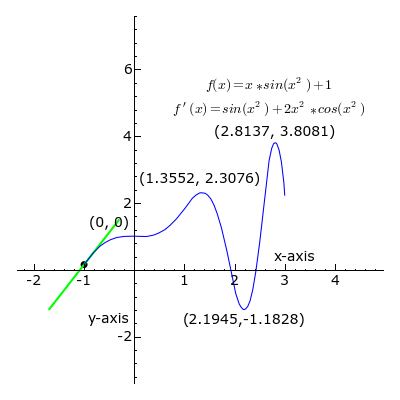Logarithm Liebster Award.
I was going to do logarithms today as my Mad-Cool-Math Nugget, but then I got nominated for a Liebster Award from Harry Potter fan, Mithila Menezes, over at
fabulous 1710. So I say, screw the math lesson, let's have a little fun. Besides, it would have been a nightmare to work with the notation for logs in Blogger anyway.
This award involves answering 11 questions and then nominating 11 people to answer your 11 questions, and so on, like a chain letter. Here are the questions Mithila posed to me:
1. Give me one word which describes you.
Tired.
2. Which is your favorite blog post to date that you wrote.
Safe Sex: Penguin Style because of the snappy title. Snort! That one was also an award/question blog. I'd totally forgotten that! How bizarre, how bizarre.
3. What is the one thing that you have to do every
day?
Read, exercise, and sleep are high on my list, but I also
have two kids and two cats that expect to be fed and given buckets and buckets
of attention. The husband? He’s learned to fend for himself.
4. Which is your favorite quote?
The one at the top of my blog. It describes my life
perfectly and that is a shame.
5. What is the one thing that you would love to do
before you die?
Find the key to immortality? Sorry, couldn’t help myself.
Um, I won’t tell you that, but I would be quite jazzed to get a novel
published.
6. Which do you prefer – Chocolate or cheese?
Come on! You are killing me here. If I were at The Melting
Pot (a fondue restaurant), it would be cheese. If I were anywhere else:
chocolate.
7. Give me one word in the dictionary that you
would love to remove and the reason why.
A truly odd question. Why would a writer give away any
words, no matter how foul? I suppose I’d chuck “very” because according to the
rules of good writing, it’s not allowed anyway.
8. If you had a choice between love, riches, fame,
or intelligence, which one would you select and why?
If I pick love, I will attract the adoration of a crazed
assassin who will remove my heart with an ice pick. If I pick riches, I’ll turn into a miser. If I pick fame, I’ll be
really irritated because, for me, camera flashes trigger migraines. Is
intelligence safe? Not exactly. Then I'll be keenly aware of all I don’t have. THIS IS A
TRICK QUESTION!
Okay, I’ll pick love.
9. If you had the opportunity to change your blog
name, what would you change it to?
Steven King
10. Name
your favorite blogger.
Tough one. Does the IWSG (Insecure Writer’s Support Group)
count?
11. Which
do you prefer: Twitter, Facebook, Instagram, Pinterest, LinkedIn? Why?
I have a LinkedIn account, but rarely use it. I set up a Twitter
account, but have long since forgotten the password. Look, I’m doing well just
getting Blogger to load here. Give a Luddite a break!
Here are my 11
suckers nominees:
1.
The Un-lost Wanderer
2.
Patricia Lynne, Independent Author
3.
After the Honeymoon
4.
V. L. Jennings
5.
Joanne Faries
6.
Lynda Grace An Hour Away
7.
Sharon Marie Himsl
8.
Mamajenna says it
9.
Cold-As-Heaven
10.
Two Shoes In Texas
11.
Doctor Faerie Godmother
If your blog is on that list, here is your mission, should you choose to accept it. (If you are interested but are too busy with the A to Z Challenge, don't feel you have to participate right away. There is no deadline.)
1. Link back to the person/blog who nominated you. (That would be me.)
2. Answer the 11 questions given to you by the person who nominated you. (Also me.)
3. Comment on this post with your link when you are done. (Seeing as we are in the middle of A to Z, you can comment on whatever post of mine is currently up if you'd rather, but I would like to see your answers when you're ready.)
4. Nominate 11 bloggers with under 200 followers, and give them 11 questions of your choice.
5. Remember to notify your nominees of their nomination and provide a link to your post.
6. Grab the Liebster badge and display if proudly on your blog. (Optional)
Here are the questions for my nominees:
1. What are you reading now?
2. Who is your favorite author?
3. What book would you like to see made into a movie?
4. Hate snow or love snow?
5. What television series, if any, are you addicted to?
6. Best vacation spot is . . .
7. Have you ever run into a celebrity? If so, dish. If not, who would you like to meet?
8. Which well-known authors have you met or would you like to meet?
9. If you could go back in time and change one thing, would you? What would it be?
10. Is blogging still relevant or will Twitter/Facebook/Other eventually replace it?
11. Complete this sentence: The best thing I've ever written . . .
Thank you Mithila, that was fun! Feel free to let loose with your answers to any of these questions in the comments below whether you were nominated or not.
____________
This week I'm giving away a
free download of my short story, The President and the Pea. This sci-fi piece was based on a nightmare I had about President Obama, broken eggs, and the
"Soda Ban" that tried to limit soft drink cup size in NYC. What can I say? My subconscious is a strange place. I did replace Obama with a future, Spanish-speaking president so as not to excite
Big Brother anyone at the NSA or Homeland Security. Not that I'm paranoid. Really.














